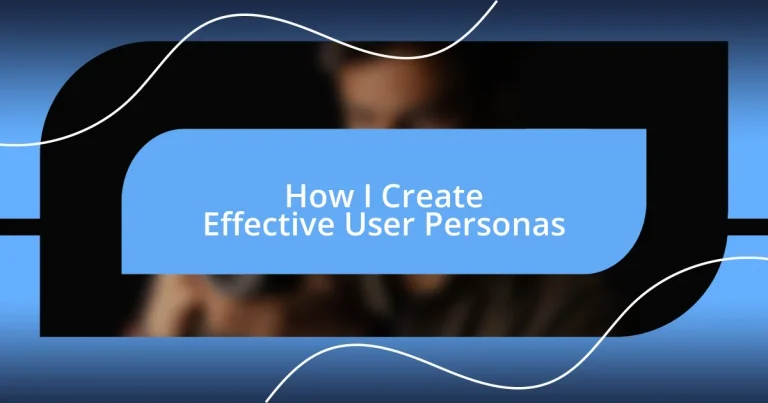Key takeaways:
- User personas, based on real audience data, enhance empathy and guide design decisions to create meaningful experiences that meet user needs.
- Research techniques such as interviews, surveys, and data analytics are crucial for gathering authentic insights that shape effective persona profiles.
- Validating and implementing user personas fosters collaboration and ensures design choices resonate with target users, ultimately improving user engagement and satisfaction.
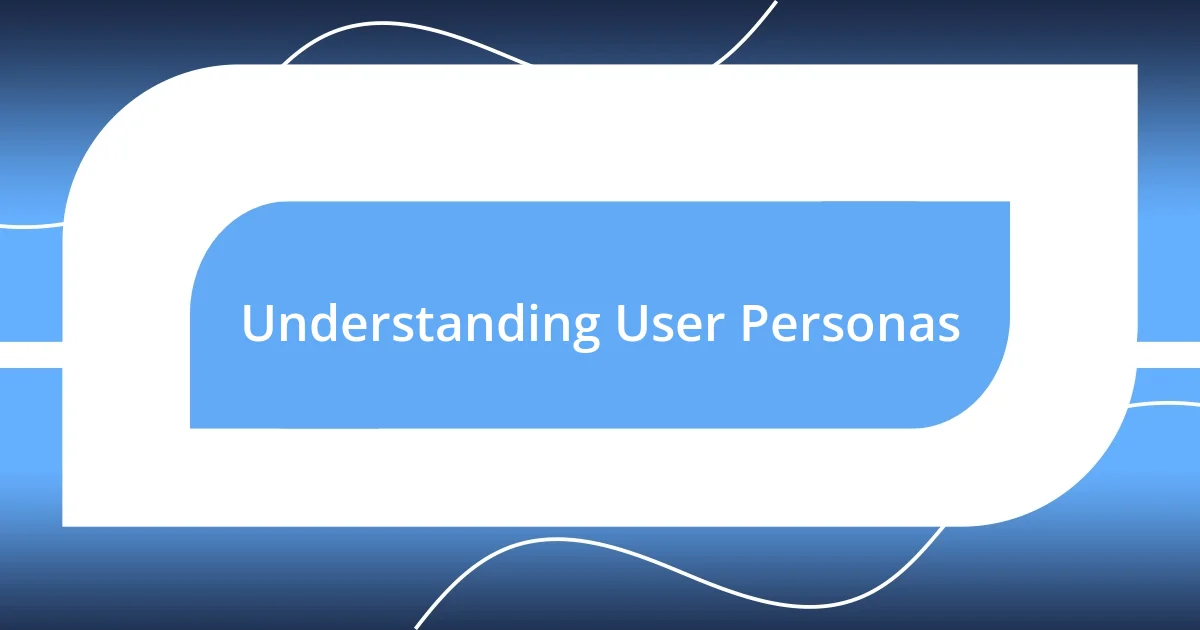
Understanding User Personas
User personas are detailed, semi-fictional characters based on the data and research about your target audience. I remember when I first started creating them for a project; I was surprised by how much insight a simple worksheet could bring. It felt like bringing my abstract audience to life, allowing me to empathize with their needs and motivations.
Have you ever tried to design something for someone else without really knowing who they are? It’s nearly impossible! That’s why understanding user personas is vital. They guide you in crafting experiences that resonate with real human emotions and behaviors, ensuring that the solutions you create meet genuine needs.
I often find that digging deep into the characteristics of my personas—like their daily challenges, goals, and even frustrations—reveals surprising insights. For instance, I once worked on a wellness app where knowing that users felt overwhelmed by choices transformed our approach completely. Instead of offering endless options, we streamlined features to create a more focused, enjoyable experience. This shift not only improved user satisfaction but also enhanced engagement.
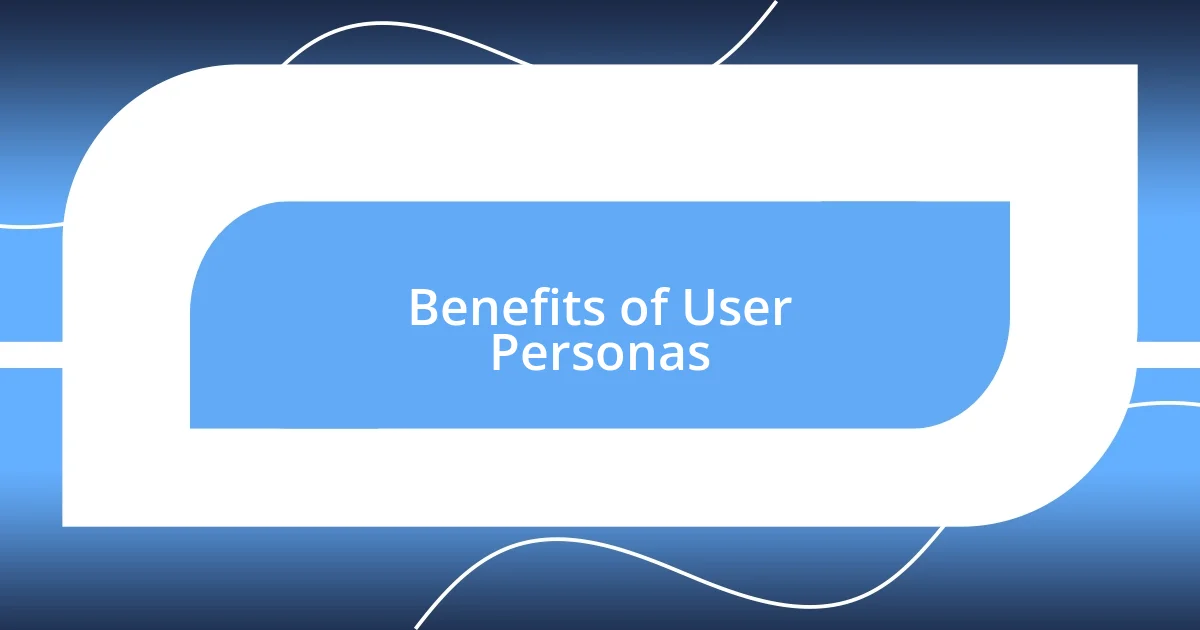
Benefits of User Personas
When I think about the benefits of user personas, one aspect stands out—clarity. By defining specific personas, I’ve seen teams align more effectively on project goals. It’s like having a roadmap: everyone knows who they’re designing for, which reduces confusion and helps keep the focus sharp. This has been a game-changer in my projects, allowing for a more cohesive vision.
Here are some key benefits I’ve observed:
- Enhanced empathy: Understanding user personas fosters a deeper understanding of user needs, leading to more empathetic product designs.
- Tailored marketing strategies: Personas help in crafting messages that resonate with specific segments, improving engagement and response rates.
- Informed decision-making: With clear personas, every design choice can be justified based on user needs and preferences, reducing guesswork.
- Efficient resource allocation: Knowing who the target audience is can help in allocating resources more effectively, ensuring time and budget are spent wisely.
- Improved user experience: Designs rooted in real user insights often lead to more satisfying interactions, boosting retention and loyalty.
I remember a project where my team initially struggled with user engagement. After creating detailed personas, we redirected our efforts toward specific user needs and preferences, which transformed our outcomes. It was remarkable to witness how our adjusted focus resonated with users, turning indifferent customers into passionate advocates.
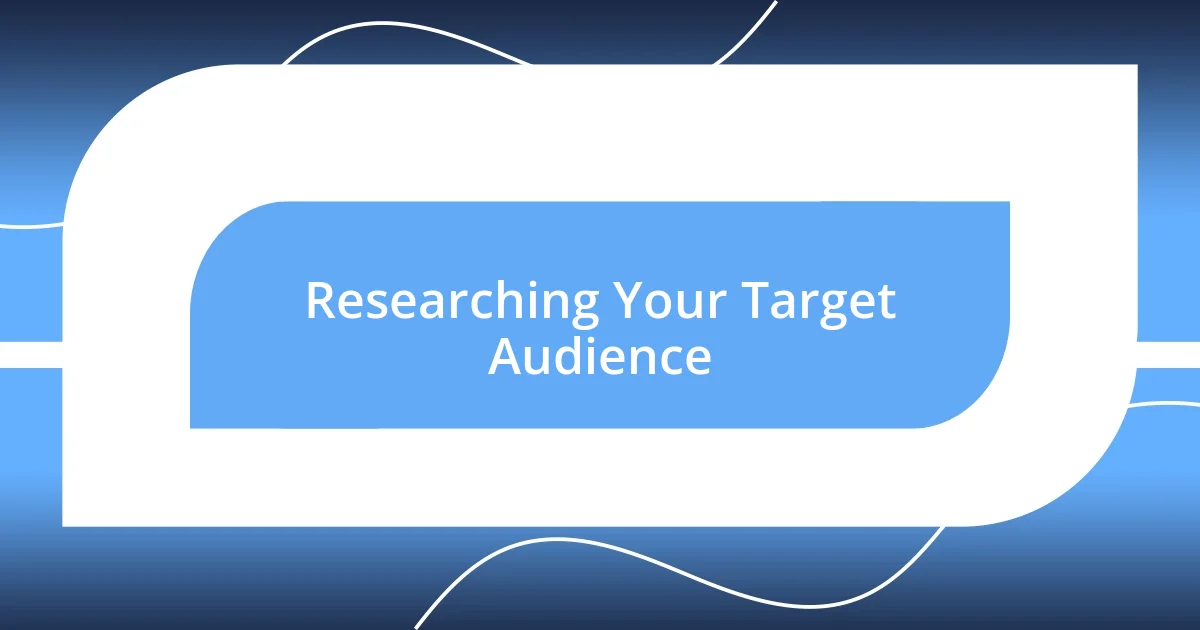
Researching Your Target Audience
Researching your target audience is an essential step that significantly shapes your user personas. One of my favorite techniques is conducting interviews and surveys. I recall a time when I reached out to potential users via social media and was amazed by the richness of the conversations. People shared their experiences and challenges in ways I hadn’t anticipated. This direct dialogue provided me with invaluable insights that really grounded my personas in real-life scenarios.
Additionally, leveraging data analytics can reveal hidden patterns within your audience. For example, I once analyzed website traffic and user behavior statistics to discover that users were dropping off at a particular point in a process. This data pushed me to dive deeper into understanding their motivations and preferences, leading to a redesign that reduced friction and enhanced the overall user experience.
Lastly, don’t overlook the power of competitive analysis. By examining competitors’ audience approaches, I learned to identify gaps in their offerings that my audience was yearning for. It was a real eye-opener! These insights not only informed my user personas but also positioned my product as a more compelling choice for users who felt underserved.
| Research Method | Description |
|---|---|
| Interviews and Surveys | A direct conversation with potential users to gather personal experiences and insights. |
| Data Analytics | Analysis of user behavior and traffic data to identify patterns and areas for improvement. |
| Competitive Analysis | Examining competitors to find gaps in their strategy that can inform your personas. |
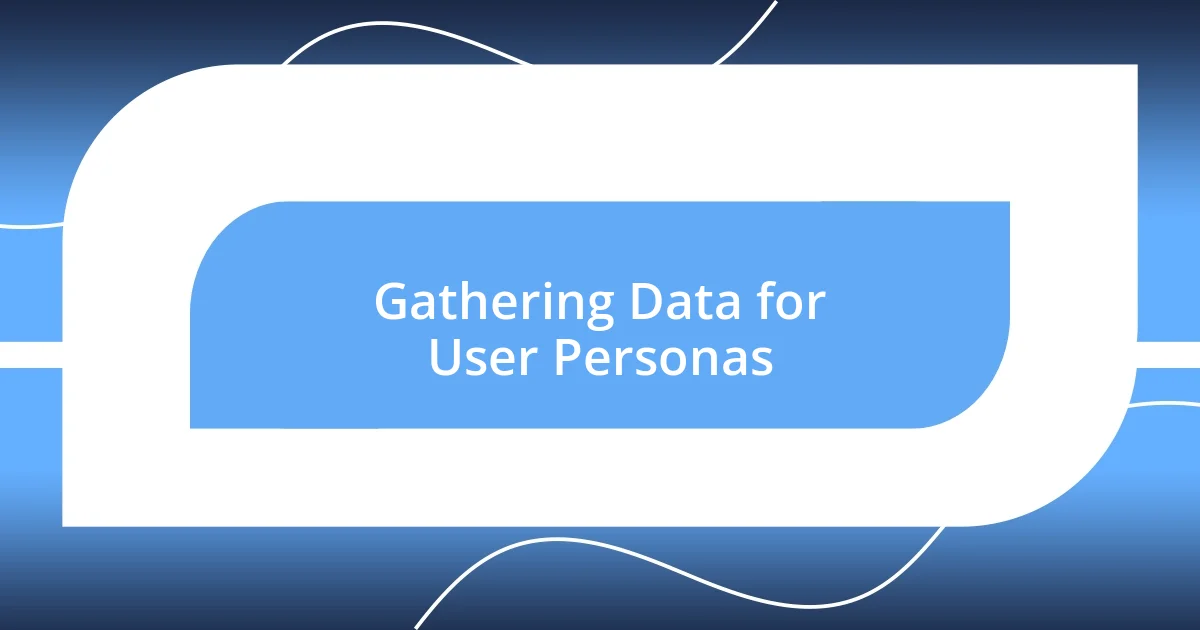
Gathering Data for User Personas
Gathering data for user personas is crucial, and I often start by tapping into the wealth of information that exists within my network. One memorable experience involved reaching out to former colleagues and friends in relevant industries. I was blown away by how eager they were to share their experiences. These conversations unearthed not just demographics but also pain points and desires that I had never considered before. Isn’t it fascinating how personal stories can illuminate broader trends?
I also embrace the magic of online forums and social media groups specifically related to my target audience. One day, while scrolling through a niche Facebook group, I stumbled upon a thread where users openly discussed their frustrations with a particular product. It hit me—these raw, unfiltered insights were like gold! They gave me a deeper understanding of the language users employed and the specific challenges they faced, shaping my personas in a way that felt authentic and relatable.
Finally, reviewing existing customer data is a game-changer I can’t overlook. While working on a recent project, I analyzed responses from previous user feedback surveys and noticed surprising trends in user satisfaction. These patterns highlighted aspects I hadn’t fully appreciated before, prompting me to ask myself: What are we missing? By diving deep into this data, I could refine my personas to truly reflect the needs and desires of real users, ultimately leading to a more tailored and impactful design.
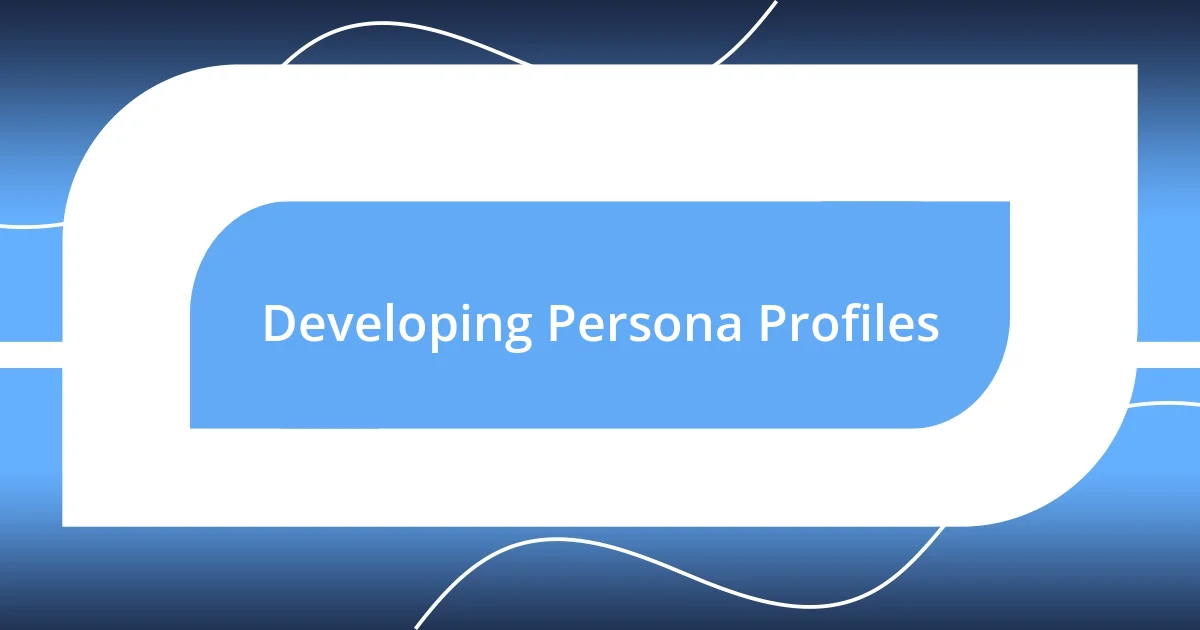
Developing Persona Profiles
Creating persona profiles involves synthesizing the wealth of data gathered from various sources into distinct character profiles. Each persona needs a name, a background story, and key characteristics that represent a segment of your audience. I remember crafting a persona named “Tech-Savvy Sarah” after analyzing feedback from early adopters. This persona not only included her age and job title but also her love for innovation and digital tools. Giving her a backstory made her journey feel real, allowing my team to empathize and design experiences tailored to her needs.
Moreover, it’s essential to define goals and pain points for each persona. When I developed “Frustrated Frank,” who often felt overwhelmed by technology, I focused on his desire for simplicity. As we outlined his challenges, I found myself pondering, “What if I could make technology feel less intimidating for users like Frank?” This thought fueled enhancements in our user journey and ultimately led to an intuitive onboarding process.
Lastly, the inclusion of visual elements and quotes can breathe life into your personas. I remember adding a graphic of Sarah next to her profile, along with a quote I collected during interviews: “I embrace new technology, but I need it to make my life easier, not more complex.” This visual reminder kept us anchored to her perspective throughout the design process. It’s moments like these that transform abstract data into dynamic stories, making my personas resonate on a personal level.
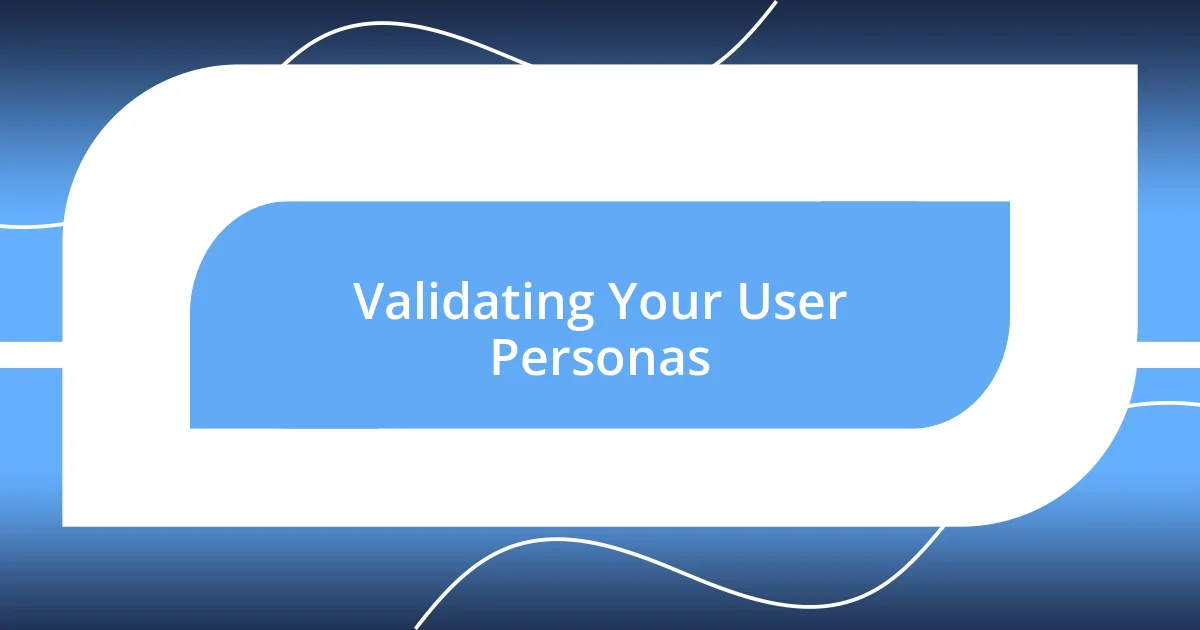
Validating Your User Personas
Validating user personas is an essential step that often gets overlooked, but in my experience, it’s where the magic truly happens. After developing initial personas, I like to conduct follow-up interviews or surveys with actual users who match my personas. One time, while validating “Budget-Conscious Betty,” I discovered her unexpected preference for sustainability. It made me realize just how important it is to test assumptions—what if I hadn’t asked? This direct feedback not only confirmed Betty’s traits but also revealed new layers that enriched the persona.
I also make it a point to collaborate with cross-functional teams during the validation phase. For instance, inviting sales or customer support teams to review my personas often sparks lively discussions. When I shared “Tech-Savvy Sarah” with the sales team, they pointed out that her proactive nature was vital in shaping our marketing strategies. I often ask myself, “What blind spots are we missing by working in silos?” These collaborative insights can lead to enriching my personas further and ensuring they’re aligned with real-world usage.
Lastly, I utilize A/B testing to put my personas to the test in practical scenarios. This approach allows me to gauge how effective my personas are in influencing user behavior. I once ran a campaign tailored to Frustrated Frank’s desires for simplicity versus one focused on an entirely different persona. The results were telling—users resonated far more with Frank’s characteristics. It’s moments like these that affirm the importance of validating personas: they not only guide design but directly impact user engagement and satisfaction, reinforcing my belief that tailored experiences matter immensely.
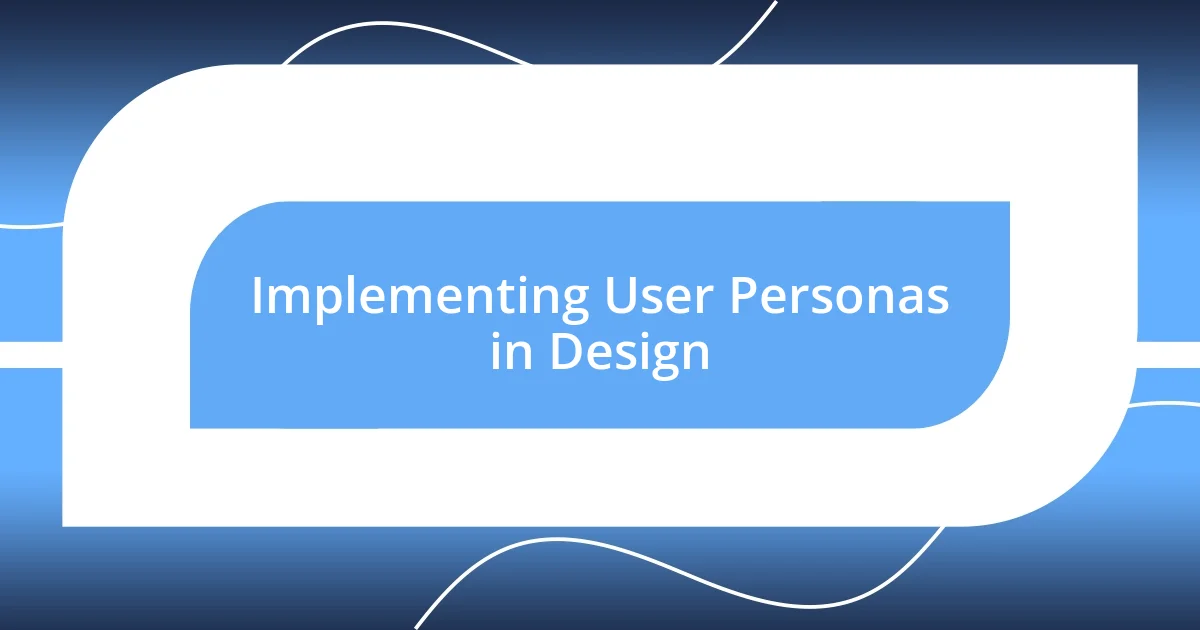
Implementing User Personas in Design
Implementing user personas in design is like having a secret weapon that guides every decision from concept to execution. I’ll never forget a project where I first introduced “Lifestyle Lucy” to my team. Her love for mindfulness and wellness inspired us to incorporate calming visuals and a user-friendly interface. As I watched my colleagues embrace her attributes during design meetings, it dawned on me that using personas is about more than just aesthetics; it creates empathy and connection in the design process.
When I rolled out features for Lucy, it struck me how critical it is to refer back to her persona throughout the project. I often ponder questions like, “Would Lucy find this feature accessible?” or “Does this meet her need for tranquility?” These reflections prompt meaningful tweaks that enhance usability. Seeing the end product resonate with users who share her traits reminds me how user-centric design can elevate a project from adequate to extraordinary.
Moreover, I encourage my team to create a visual reminder of the persona, often pinning Lucy’s profile on our brainstorming wall. It became a focal point during discussions, inspiring ideas that aligned with her character. The emotional connection we built with Lucy not only shaped our design approach but ignited passion for creating a genuinely user-friendly experience. Every brainstorming session became less about churning out features and more about crafting solutions that would truly benefit someone like Lucy.












